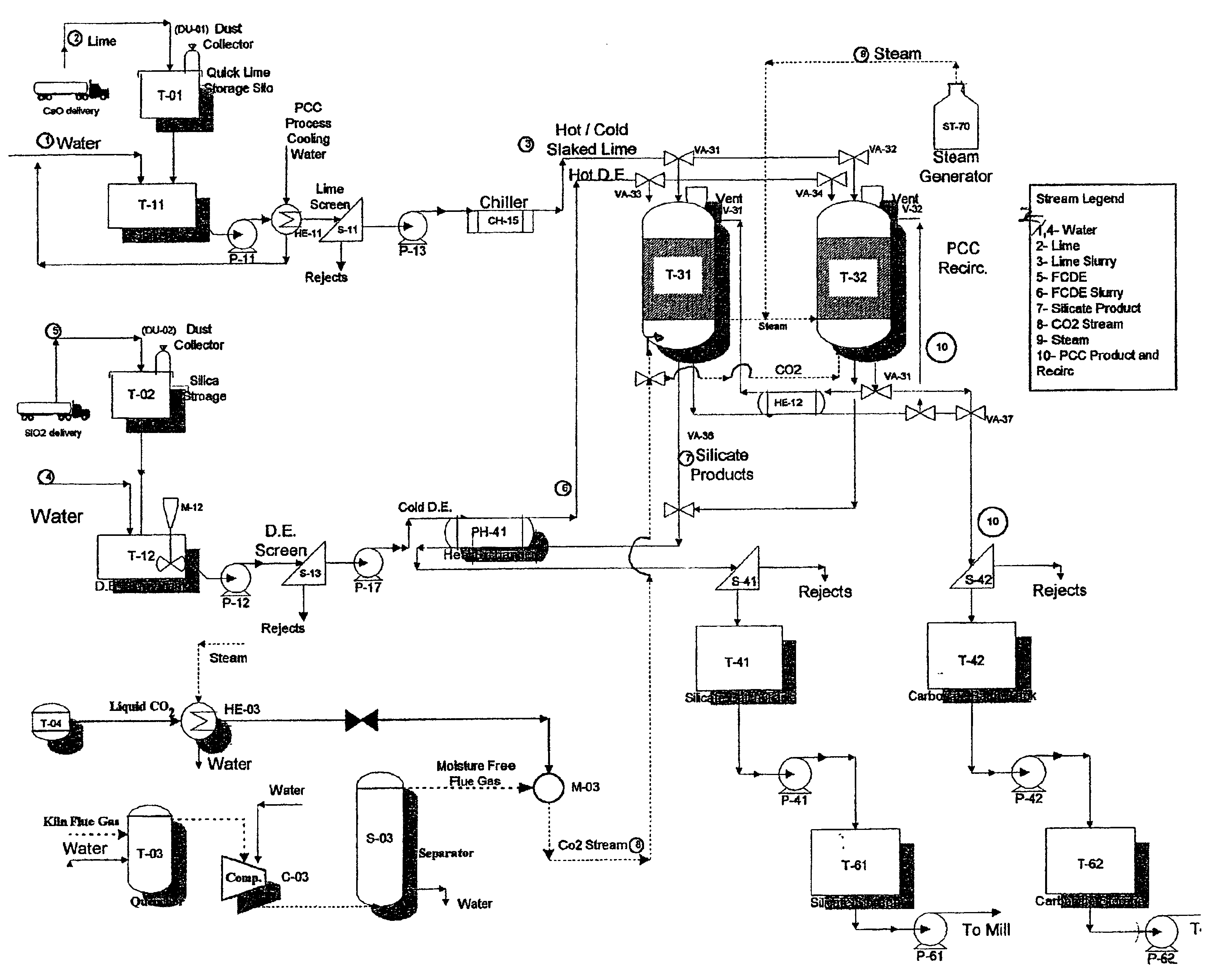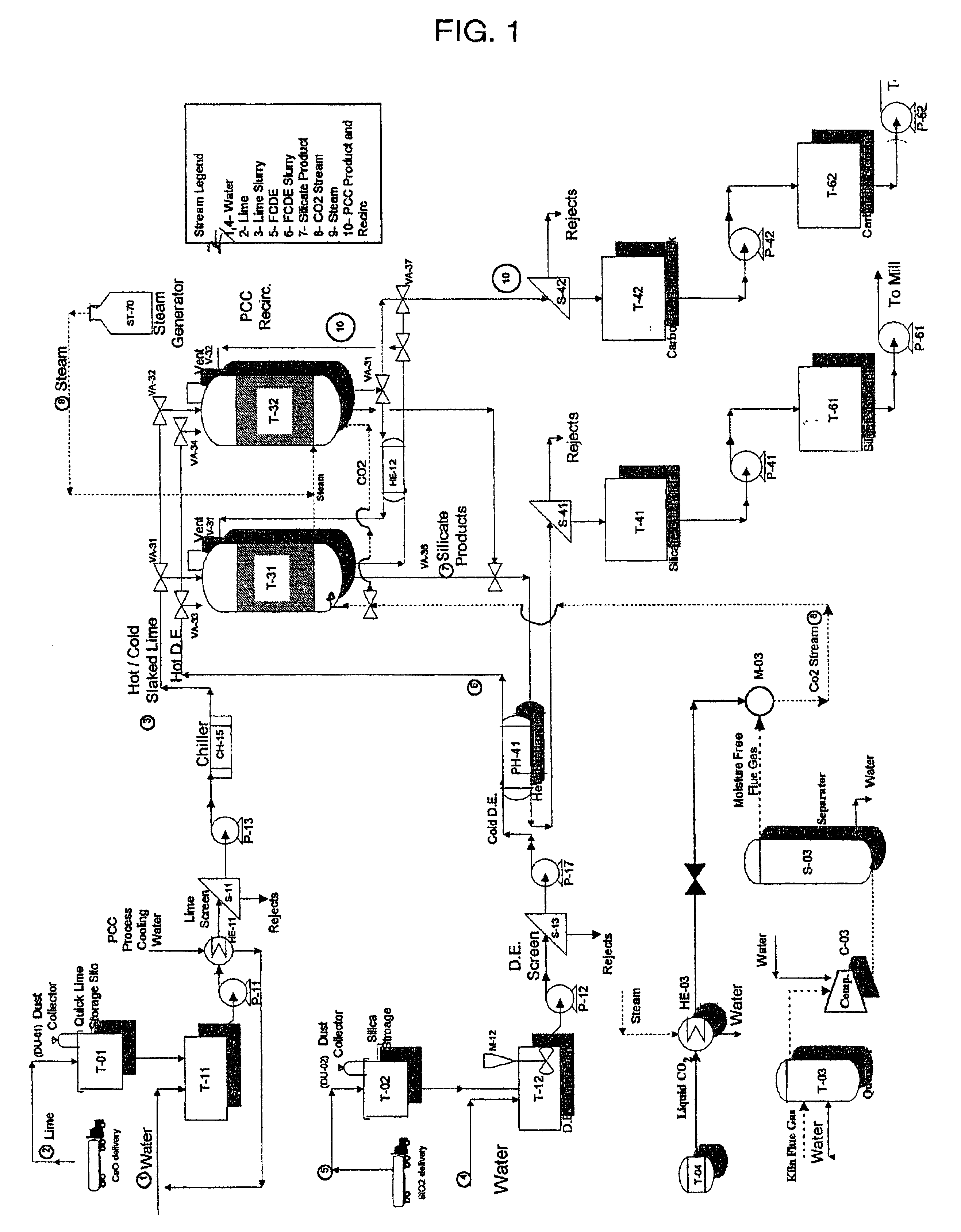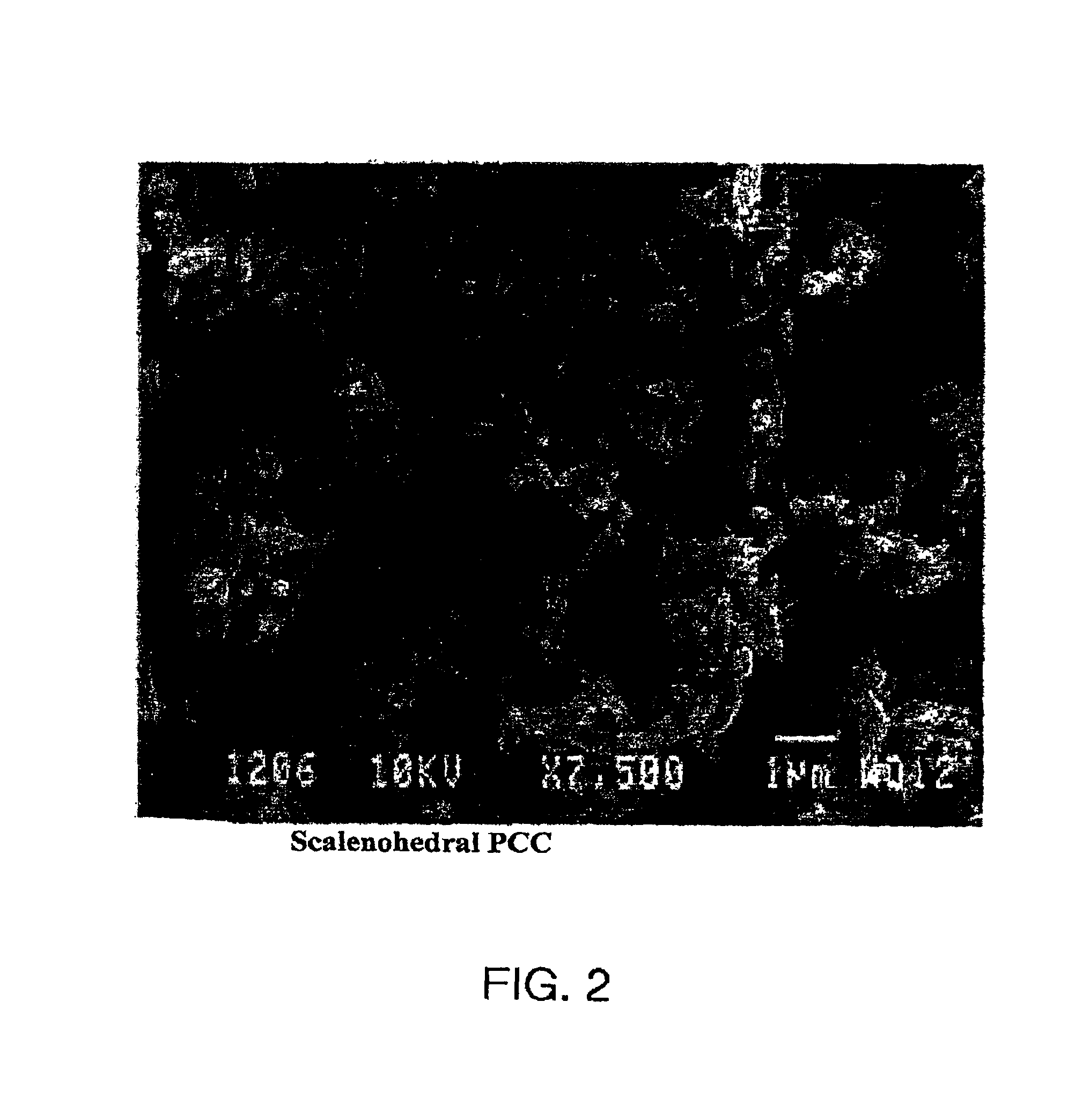Method and apparatus for production of precipitated calcium carbonate and silicate compounds in common process equipment
a technology of process equipment and precipitation, which is applied in the direction of silicon compounds, silicates, energy input, etc., can solve the problems of tiosub>2 /sub>, the effect of opacity and bulk
- Summary
- Abstract
- Description
- Claims
- Application Information
AI Technical Summary
Benefits of technology
Problems solved by technology
Method used
Image
Examples
example 1
The Effect of Pressure in a Pressure Carbonation System on Reaction Rate, Carbonation Efficiency, and Surface Area of PCC
[0192]In a series of experiments, the carbonation reaction pressure was raised from 0 psig (as done with a conventional open tank PCC system) to 70 psig. The reaction temperature was kept constant at 100° F. and the % CO2 was kept constant at 20% CO2 / 80% N2 by volume. The resulting experimental data is given in Table 2. The resulting reaction rate at 0 psig was 4.6 grams per liter of slurry per minute. In the pressure carbonation system operating at 70 psig, it was 6.1 grams per liter per minute. The increase in reaction rate was approximately 33%. The carbonation efficiency, i.e., carbon dioxide utilization, increased from 76% to 100%. The surface area (Blaine) of the PCC produced by this process increased from 31,400 cm2 / gram at 0 psig, to a maximum of 40,200 cm2 / g at 50 psig, and then decreased slightly to 35,500 cm2 / g at 70 psig. See FIGS. 12, 13, and 14.
[019...
example 2
The Effect of Temperature in a “Pressure Carbonation” System
[0194]As in example 1, the slaked lime was placed into a reactor at a slurry concentration of 250 grams of calcium hydroxide per liter. The starting carbonation temperature was varied from 65° F. to 125° F. A first set of reactions was carried out under conventional atmospheric pressure or open PCC type system conditions at 0 psig. The next set of reactions was carried out under a pressure of 30 psig. A gas mixture of 20% carbon dioxide and 80% nitrogen by volume was bubbled through the reactor. The flow of carbon dioxide was at the rate of 1.5 liters per minute. The reaction rate was calculated by titrating Ca(OH)2 at the beginning and end of the reaction. As the reaction proceeded, the reaction temperature increased, with the temperature starting at 100° F. and ending at 163° F. The end of the reaction was indicated when the temperature reached a maximum and then declined. The point of inflection in the temperature curve ...
example 3
The effect of %CO2 Concentration on Reaction Rate, Carbonation Efficiency, and Surface Area
[0200]In this series of experiments, the concentration of CO2 was varied from 5.0% CO2 / 95% N2 to 100% CO2 / 0% N2, by volume. Other reaction conditions were kept constant at the following levels:
[0201]
Flow of CO2:1.5 liters per minuteCarbonation Reaction Temp.:100° F.Ca(OH)2 Concentration:˜260 grams per liter
[0202]The results of the measurements of the reaction rate, carbonation efficiency, and PCC surface area for a non-pressurized and pressurized system are given in Tables 5 and 6, respectively. The results are also graphed in FIGS. 18, 19, and 20.
[0203]It is evident from FIG. 18 that when the entering gas stream contains only 5.0% CO2 , the reaction rate is almost doubled by using “pressure carbonation” PCC production with a gauge pressure of 30 psig. As indicated in FIG. 20, the surface area comparison between batch #140 and batch #149 also indicates the formation of a finer PCC particle siz...
PUM
| Property | Measurement | Unit |
|---|---|---|
| Temperature | aaaaa | aaaaa |
| Temperature | aaaaa | aaaaa |
| Temperature | aaaaa | aaaaa |
Abstract
Description
Claims
Application Information
 Login to View More
Login to View More - R&D
- Intellectual Property
- Life Sciences
- Materials
- Tech Scout
- Unparalleled Data Quality
- Higher Quality Content
- 60% Fewer Hallucinations
Browse by: Latest US Patents, China's latest patents, Technical Efficacy Thesaurus, Application Domain, Technology Topic, Popular Technical Reports.
© 2025 PatSnap. All rights reserved.Legal|Privacy policy|Modern Slavery Act Transparency Statement|Sitemap|About US| Contact US: help@patsnap.com



